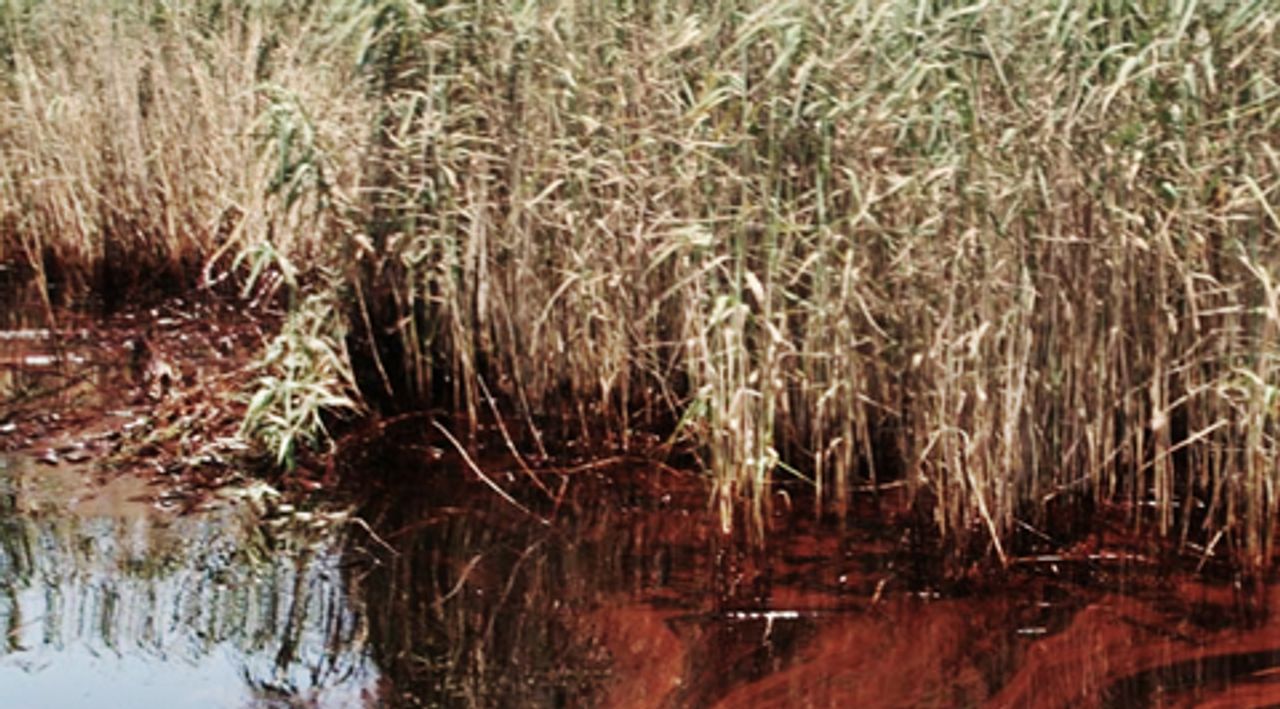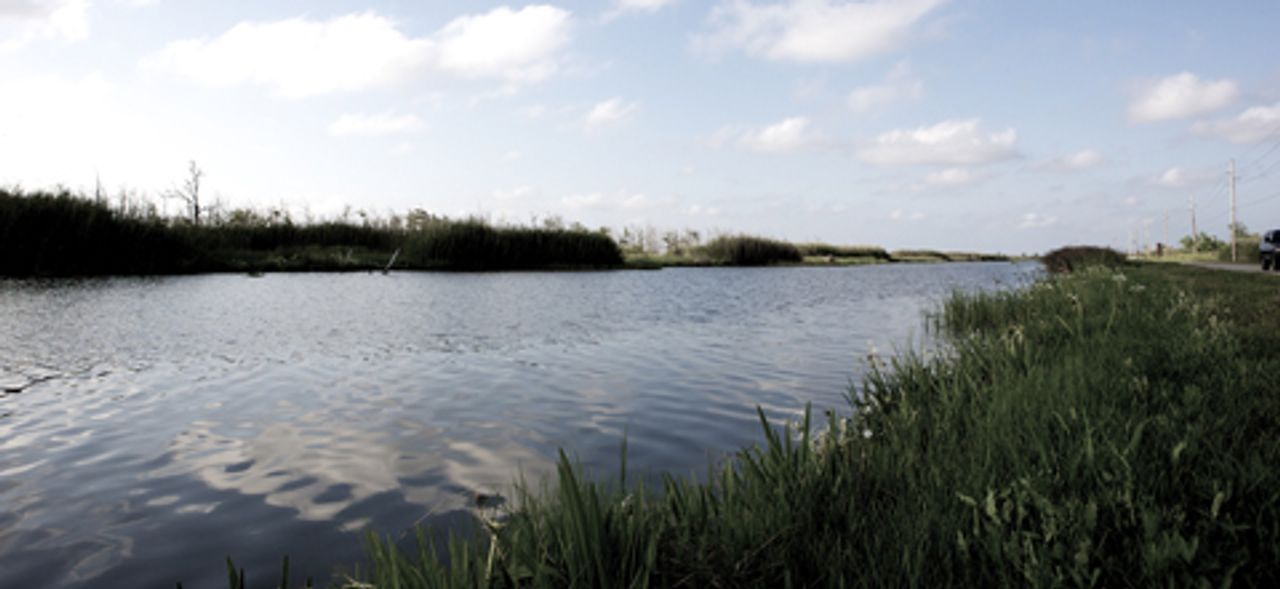Each passing day brings two basic realities into starker and starker relief: the direct culpability of BP in the Gulf Coast oil spill, and its total incapacity or unwillingness to contain the oil blanketing the shoreline.
 Oil in the marshes of the Mississippi Delta – Photo: Plaquamines Parish Government
Oil in the marshes of the Mississippi Delta – Photo: Plaquamines Parish GovernmentOn Wednesday, Schlumberger, the oilfield services company, which had been contracted to do testing on the Deepwater Horizon oil rig, revealed that BP skipped a critical test of the cement seals of the drill well, which would have detected that the cementing job was not adequate.
Schlumberger officials said in an email statement that a team of the firm’s workers were “on standby” in the two days before the blast, but they never conducted the test they were hired to carry out: an acoustic test of the well’s soundness. Instead, they were sent back by helicopter 11 hours before the explosion.
Steve Gordon, of Gordon, Elias, & Seely Maritime Lawyers, which represents a number of survivors of the blast, said that this step was taken by BP to cut costs at the expense of safety. “The whole basis of the decision was money,” he said. “This finding presents even more evidence of gross negligence and criminal behavior. It’s a conscious disregard for the rights and the welfare of the crew.”
The news comes after revelations that the company had earlier replaced heavy drilling mud with saltwater prior to capping the well. This highly unusual move may very well have undermined the safety of the rig, since saltwater is easier to displace than drilling mud, making it more likely that a blowout would make its way up the pipe.
“What the public has found out now clearly raises the actions of BP to the level of criminal behavior,” added Gordon.
BP executives continue to pat themselves on the back and play down the impact of one of the biggest ecological disasters in US history. BP Chief Operating Officer Doug Suttles told CBS News May 21 that “there have been larger spills in the Gulf of Mexico and the Gulf of Mexico has survived. … It’s a large body of water, it’s a warm body of water, it has natural oil seeps which the environment deals with. … Time will tell, but I’m optimistic, I’m very optimistic that the Gulf will fully recover.”
 The Plaquamines Parish wetlands before being contaminated by the spill
The Plaquamines Parish wetlands before being contaminated by the spillMeanwhile, thick, dense coats of orange oil made landfall in Grand Isle, Louisiana on Friday, covering beaches with toxic sludge. Despite last-ditch efforts to block off wetlands by constructing barrier islands, residents told local news agencies that they saw large chunks of oil breaking through into the wetlands.
Thus far, the trajectory of the oil spill has been almost entirely unpredictable, owing to the lack of available data. BP and the US government, seeking to keep the amount of oil being spilled under wraps, have delayed studies into the movement of submerged oil, with only the most preliminary information available.
Billy Nungesser, president of Plaquamines parish, Louisiana, where oil had landed earlier this week, said that the sensitive wetlands in his area were being destroyed by the spill. “It’s obvious that we’re not winning this battle,” he told the WSWS.
“Thick black oil has washed into the marshes in several areas of the Delta,” said Nungesser. “It’s coated everything, killed everything from the bugs to the fish.”
“We’re putting a little band-aid here and there, but we’re losing too much blood,” he said. “Every time there is bad weather, it blows the booms out of the area, and the oil comes through.
He said the response of BP and the federal government has been inadequate. “I just spoke to the US president, and demanded he force BP to construct sand barriers around the marshes.” Nungesser said that he had been asking BP to take this step for over 20 days, but had gotten nowhere.
“At first BP said that there was no oil spill. Then they told us that no oil would come to the surface; only tarballs and sheen,” said Nungesser. “Finally, they said they would help clean the oil out of the wetlands.” he added.
“We told them that you can’t get oil out of the wetlands once it’s in there, but they still haven’t put up sand barriers.” A BP spokesperson refused to comment on the issue.
Meanwhile BP conceded to demands that it make a live video feed of the oil spill available on its web site, after the Obama administration sent a letter criticizing its response Thursday afternoon. Neither the administration nor BP has yet submitted an updated estimate of the amount of oil leaking from the spill.
BP meanwhile has changed its estimate of the amount of oil being siphoned by a vacuum insertion tube from the spill site. The company had previously claimed that 5,000 barrels of oil were being siphoned from the site daily, an amount equivalent to its own estimate of the total daily size of the spill.
On Friday the company provided the press with a much lower estimate. A BP spokesman said in a telephone interview with the WSWS that since May 17, 2,100 barrels had been siphoned per day, with the daily rate ranging from 1,400 to 4,000 barrels.
He also said in the last 24-hour period, i.e., May 20, that 2,200 barrels had been removed by the tube. When questioned about the figure of 5,000 barrels a day being siphoned from the site, he said that the rate briefly hit that figure “whatever day we said it was that, I think yesterday.”
Meanwhile several experts have noted that BP has a definite interest in obscuring the amount of oil being released. McClatchy Newspapers explained: “Legal experts said that not having a credible official estimate of the leak’s size provides another benefit for BP: The amount of oil spilled is certain to be key evidence in the court battles that are likely to result from the disaster. The size of the Exxon Valdez spill in Alaska, for example, was a significant factor that the jury considered when it assessed damages against Exxon.”
The accomplice of BP, the Obama administration has refused to demand that the oil firm take accurate measurements, and has refused to provide measurements of its own.
